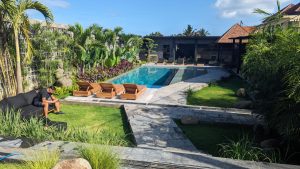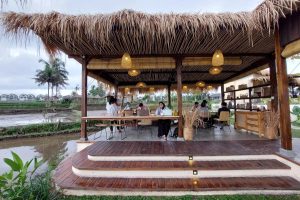Orangutans are one of the main draws for visiting places like Sumatra, one of the largest islands in Indonesia. I came here as part of a weekend trip from Bali which is of course one of the best places in the world (I absolutely love living in Bali). Sumatra was also a new island for me after I had already visited other islands in Indonesia like Lombok and Java for Borobudur.

Having already trekked with the gorillas in Africa, not once but twice in two different places, it was only a matter of time before I visited the other large primate species of the world. While my experiences trekking with the mountain gorillas in Uganda as well as the Eastern lowland gorillas in the DRC were absolutely incredible, trekking with Orangutans in Sumatra was its own unique experience.
This post will go into detail about my experiences trekking with these magnificent creatures and how to plan your our journey. It’s quite a simple process (and super cheap) to book an orangutan trekking experience in Indonesia!

Where to find Orangutans in Asia?
Orangutans are nowadays only found in the region of north Sumatra in Indonesia and in the Sabah area of Borneo in Malaysia. Orangutans were much more widespread in years past occupying areas like Java and the Malaysian mainland but have seen its numbers dip pricipitously due to deforestation. It’s a sad state of affairs as the palm oil industry has effectively destroyed a lot of the orangutan’s habitat.

Sumatra vs Borneo Orangutans
Sumatran and Bornean orangutans are two distinct populations of orangutans. They have various differences which I will explain in the below.
Geographic Distribution: Sumatran orangutans are found exclusively on the Indonesian island of Sumatra, while Bornean orangutans inhabit the island of Borneo, shared by Indonesia, Malaysia, and Brunei.
Physical Differences: Sumatran orangutans tend to be smaller in size and have longer, lighter reddish-brown hair. Bornean orangutans are generally larger, with shorter and darker reddish-brown hair.
Behavior: Sumatran orangutans are more solitary, often leading solitary lives and having fewer social interactions. In contrast, Bornean orangutans exhibit a more flexible social structure and can be more sociable, sometimes interacting in small groups. In addition, Sumatran orangutans live and operate in the trees while their Bornean cousins are more often found on the ground. This is because of the Sumatran tiger which is the main predator for the Sumatran orangutan that is not found in Borneo.
Range and Habitat: Sumatran orangutans inhabit the montane and lowland rainforests of northern Sumatra, while Bornean orangutans are found in a broader range of habitats, including peat-swamp forests, riverine forests, and hill dipterocarp forests.
Conservation Status: Both species are critically endangered due to habitat loss and poaching, but Sumatran orangutans have a smaller population size and a more restricted range, making them particularly vulnerable.
Genetic Differences: Genetic studies have identified variations in their DNA, reinforcing their distinct species status.
Diet and Foraging: Both species primarily consume fruits, leaves, and other plant materials. Bornean orangutans are known to have a broader diet and are more adaptable in their food choices.
Vocalizations: Orangutans communicate through vocalizations, with both species sharing some calls and sounds. However, differences in their specific vocalizations can help distinguish between them.
Facial Flanges: Adult male orangutans of both species develop facial flanges, which are large cheek pads made of fatty tissue. Bornean males generally have larger and more pronounced flanges, although both species exhibit this characteristic.
Why Orangutan Trekking in Sumatra is Unique
Sumatra’s rainforests are among the most biodiverse and enchanting in the world. What makes orangutan trekking in Sumatra particularly unique are the following aspects
1. The Sumatran Orangutan:
Sumatra is home to the critically endangered Sumatran orangutan, one of the most iconic primate species in the world. This distinct species is smaller and rarer than its Bornean cousin, making it a unique and privileged encounter.
2. Lush Rainforests:
The Sumatran rainforests, part of the larger Leuser Ecosystem, provide an exquisite backdrop for your adventure. The verdant, diverse, and pristine forests are a haven for countless wildlife species, not just orangutans.
3. Ethical Wildlife Viewing:
Responsible tourism is at the core of orangutan trekking in Sumatra. Guides and tour operators follow strict ethical guidelines to ensure the well-being of orangutans and their habitats.
4. Close Encounters:
The guided treks offer a chance to come within close proximity to orangutans, providing an intimate and memorable experience with these remarkable creatures.
5. Supporting Conservation:
By participating in orangutan trekking tours, you contribute to the conservation of this endangered species and their habitats. The funds generated often go toward local conservation efforts.
6. Immerse in Local Culture:
The trekking experience also allows you to engage with local communities and learn about their traditions and way of life. It’s a cultural and ecological journey in one.
7. Unforgettable Memories:
The sheer uniqueness of the experience, the remarkable sightings, and the sense of being in a world far removed from urban life make this adventure an unforgettable memory that will last a lifetime.
Where to go trekking with orangutans in Sumatra?
The journey begins with your arrival in Sumatra, and the nearest major gateway is Medan, the capital of North Sumatra. Medan’s Kualanamu International Airport is well-connected with both domestic and international flights, making it a convenient starting point for your adventure. All orangutan treks will start from the town of Bukit Lawang.
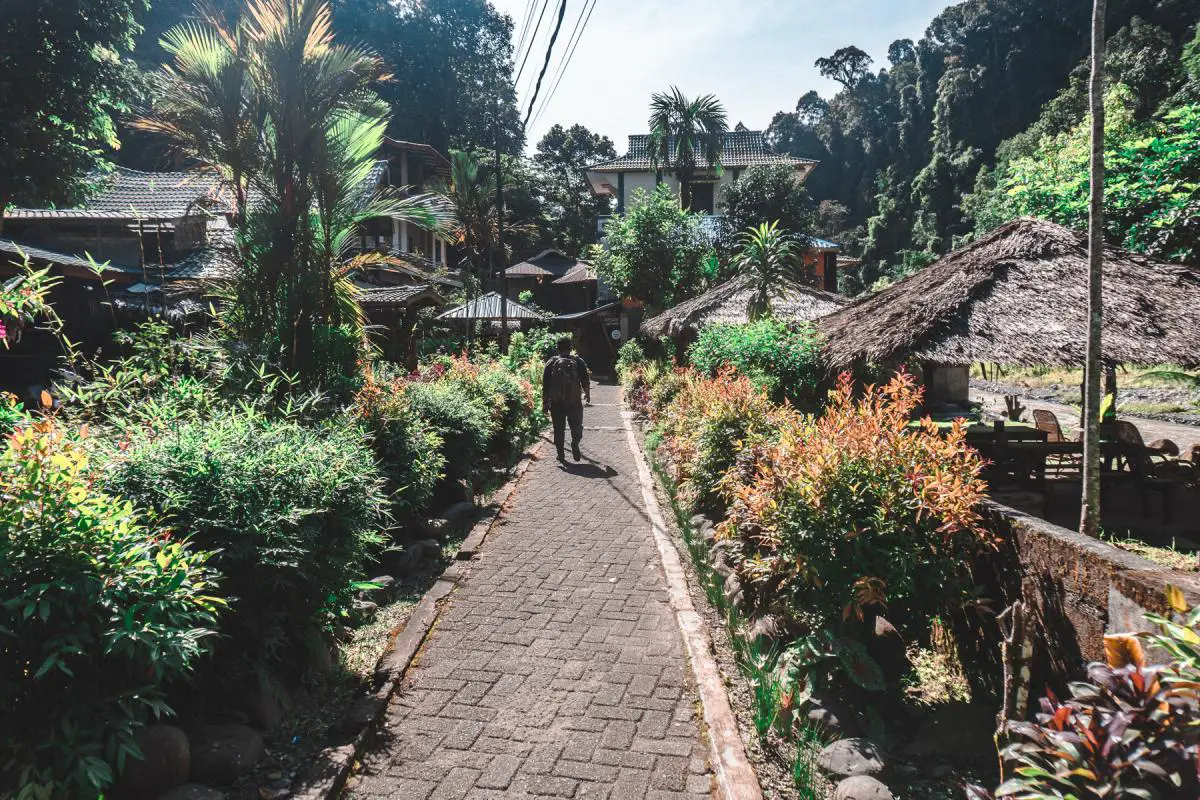
Upon arrival in Medan, you have a few options to reach the orangutan trekking destination:
Hiring a Private Car
One of the most comfortable ways to travel from Medan to Bukit Lawang is by hiring a private car. The journey takes approximately 3-4 hours, depending on traffic conditions. Private cars provide flexibility and comfort, but it can be a more expensive option. Because it’s Indonesia and they have subsidized gas prices, you won’t need to pay much for this drive.
You can expect to pay about 700k-1m IDR depending on your negotiation skills which is very cheap considering how far you’re driving.
Public Bus
An alternative and more budget-friendly option is to take a public bus from Medan to Bukit Lawang. While this mode of transportation might be less luxurious, it allows you to experience local life and provides cost savings.
Planning Your Orangutan Trek
Once you’ve reached Bukit Lawang, you’re on the doorstep of the Gunung Leuser National Park, the primary orangutan habitat in Sumatra. Now it’s time to plan your trekking adventure.
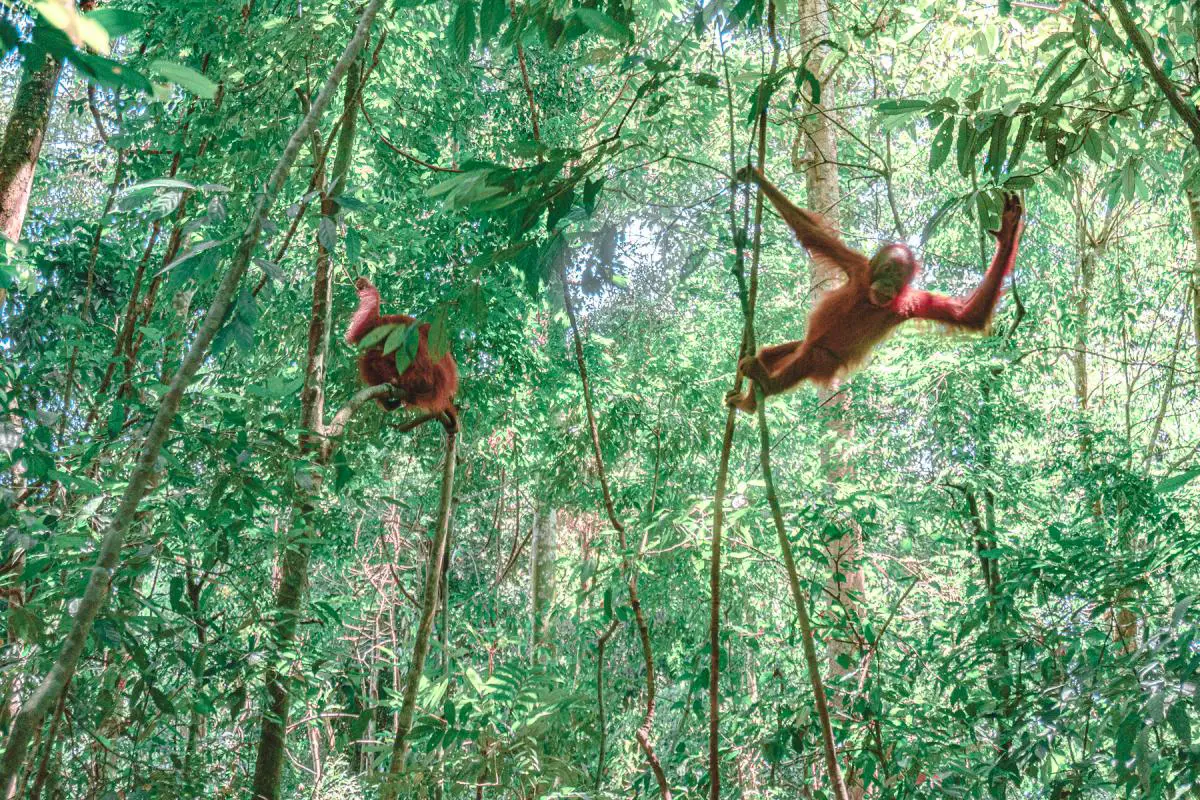
Finding a Tour Operator or Guide for the orangutan hike
While it’s possible to explore the park independently, it’s highly recommended to book a tour or hire a knowledgeable guide. Experienced guides are familiar with the rainforest, the orangutans’ habits, and can ensure your safety throughout the journey. To choose the right guide or tour operator:
- Look for recommendations and reviews from fellow travelers.
- Select operators who prioritize responsible and eco-friendly tourism practices.
- Ask about the size of the groups they lead and the type of treks they offer to ensure it aligns with your preferences.
In the end, we just had our guesthouse arrange the trekking and guide for us. There are so many tour operators that do the trip but we wanted to keep it simple and trusted our guest house to the do the work.
Where to stay in Bakit Lawang
There are a plethora of places to stay in Bakit Lawang in all price ranges that offer you super close proximity to the orangutan treks. Note that there isn’t much going on in the village here so it’s unlikely you’ll leave your guesthouse much to explore the town as it’s not that type of place.
I ended up staying at Sam’s Bungalows which was very spacious and comfortable. The price was also very reasonable and the rooms are huge.

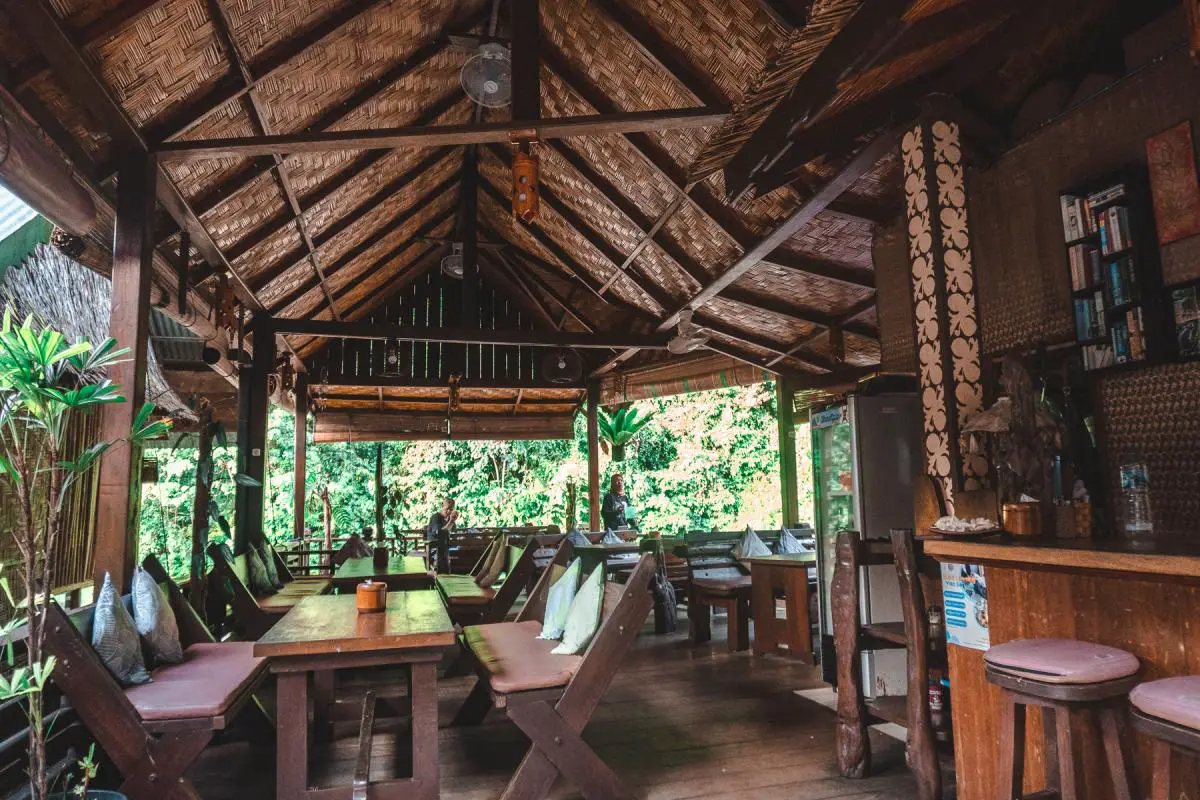
The food at the restaurant was also very good with incredible beef rendang which is native to this area. This is also one of my favorite dishes in the entire world when it’s done right.
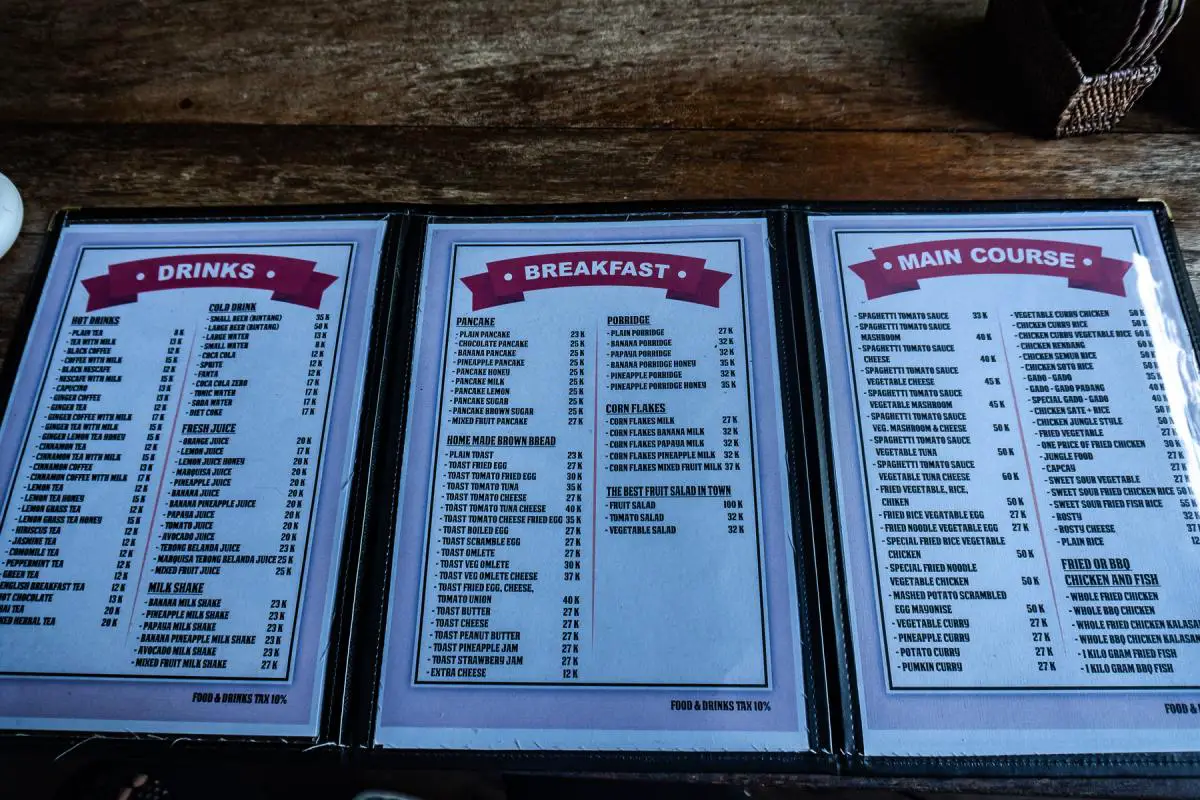

Hiking through the rainforest of Bukit Lawang
The rainforest of Bukit Lawang teems with incredible wildlife. During our two treks, we had the privilege of encountering a diverse array of creatures. Our sightings included orangutans, gibbons, Thomas Leaf monkeys, long-tailed macaques, monitor lizards, colossal ants, and a breathtaking banyan tree that was truly spectacular. The jungle unveiled many more enchanting sights as we ventured deeper into its heart.

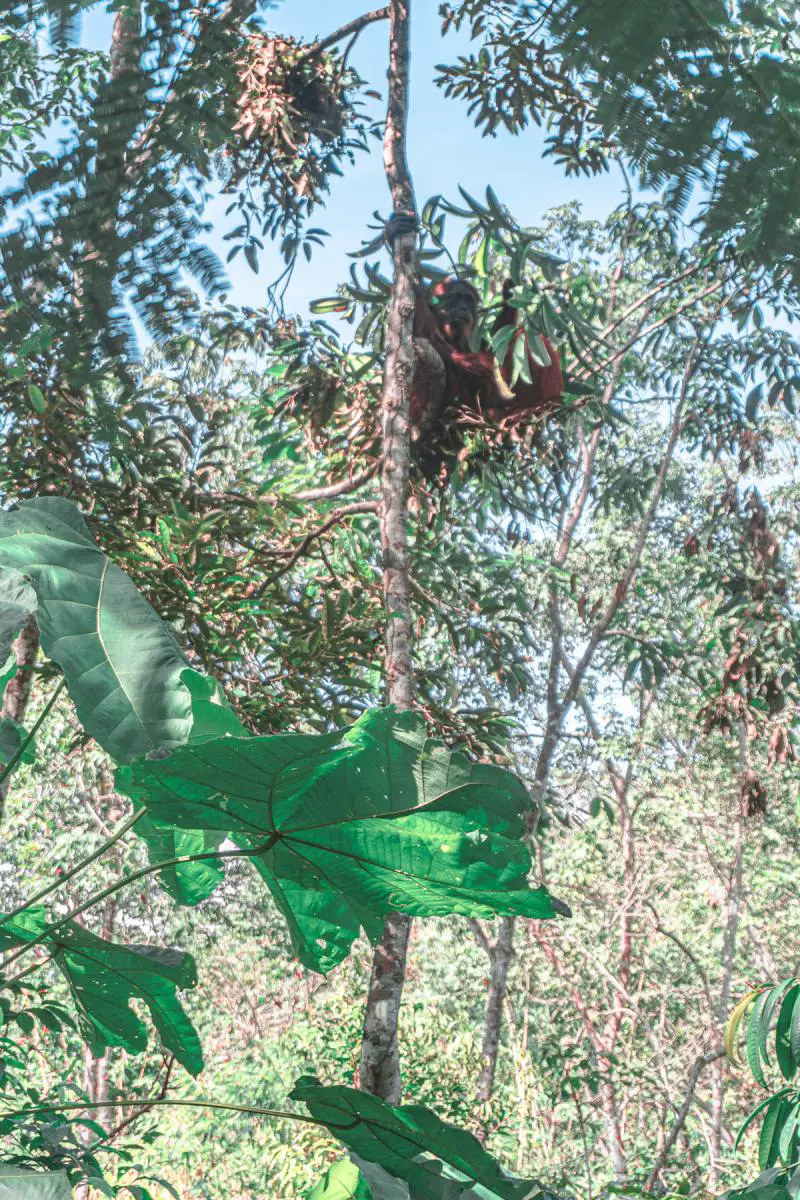
Within the boundaries of the national park, the possibilities are even more intriguing. Lucky adventurers might catch glimpses of rare birds, the elusive Sumatran tigers, rhinoceros, elephants, sun bears, pig-tailed macaques, as well as reptiles like vipers, cobras, and kraits. The biodiversity is simply astounding.
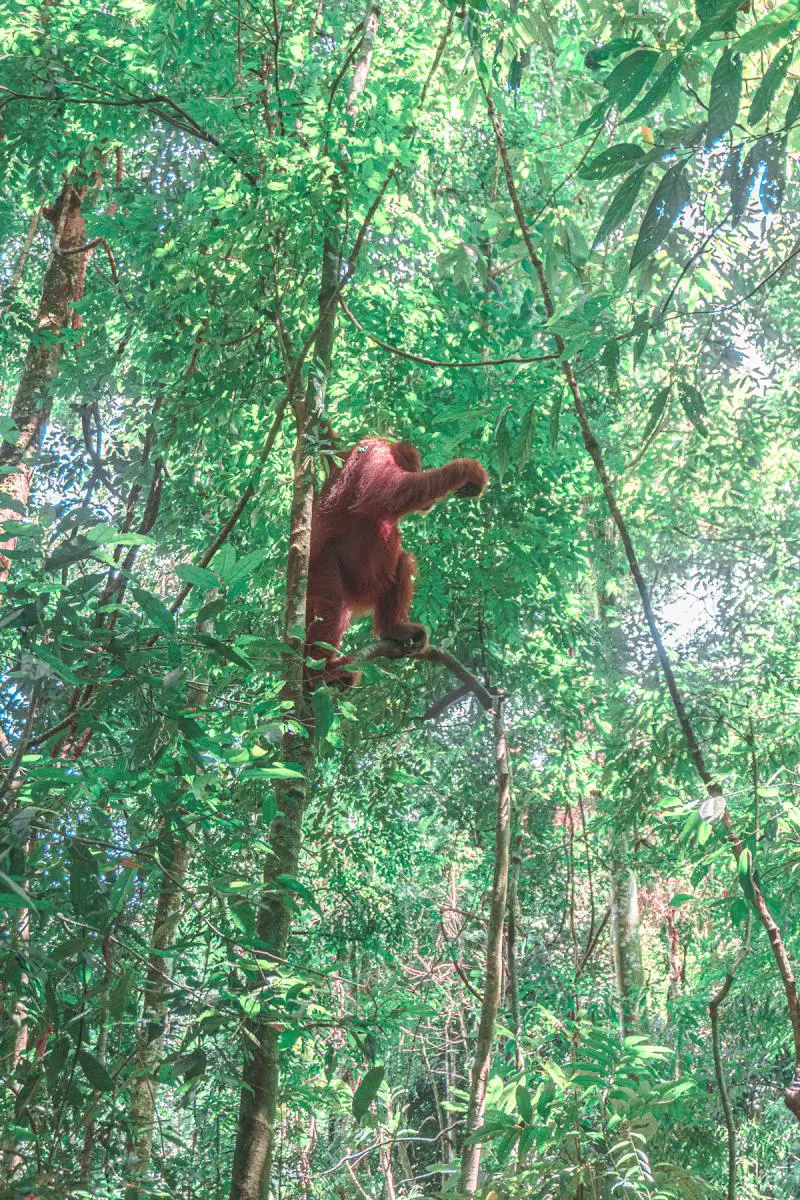
Rules before hiking
As this jungle is an integral part of the Gunung Leuser National Park and home to endangered species, there are specific rules that visitors are expected to adhere to:

- Never enter the park without a guide. If you opt for a trekking package, you’ll be accompanied by two knowledgeable guides at all times. Their role is to ensure your safety in the jungle and provide insights about the Sumatran Orangutan and other wildlife.
- Always obtain the necessary permits before entering the park. Your guide from Bukit Lawang will handle this for you.
- Maintain a safe distance of at least 10 meters from wild animals. While animals may occasionally disregard this rule and come closer, it’s crucial to respect their space.
- Under no circumstances should you feed or touch wild animals. Human interaction can lead to dependency or the transmission of diseases, posing a threat to the animals, including the Sumatran Orangutan.
- Never leave any trash behind in the National Park. The importance of this rule is self-evident, and thankfully, during our treks, we didn’t come across any litter in the pristine jungle.
Trekking to see the orangutans
The Bukit Lawang jungle trekking experience offers adventure and natural beauty, but it’s important to be prepared for a few challenges. While it’s not excessively demanding, it’s more strenuous than one might expect.

Bukit Lawang has its share of steep hills that will certainly give your legs a workout. Additionally, the terrain can be muddy and occasionally challenging due to thorns and leeches. Moreover, the daytime humidity can be quite intense.

However, don’t let these challenges deter you. They’re an integral part of the experience and add to the adventure. If you’re uncertain about your fitness level, you might consider opting for the 1-day trek instead of the 2-day trek.
Camping
After a day of trekking, we indulged in a refreshing soak in the clearwater creek, a perfect way to cleanse and cool off in the midst of the jungle. The camp setup is simple, with a small 2-person tent inside a larger bamboo shelter where the guides and cooks can stay.
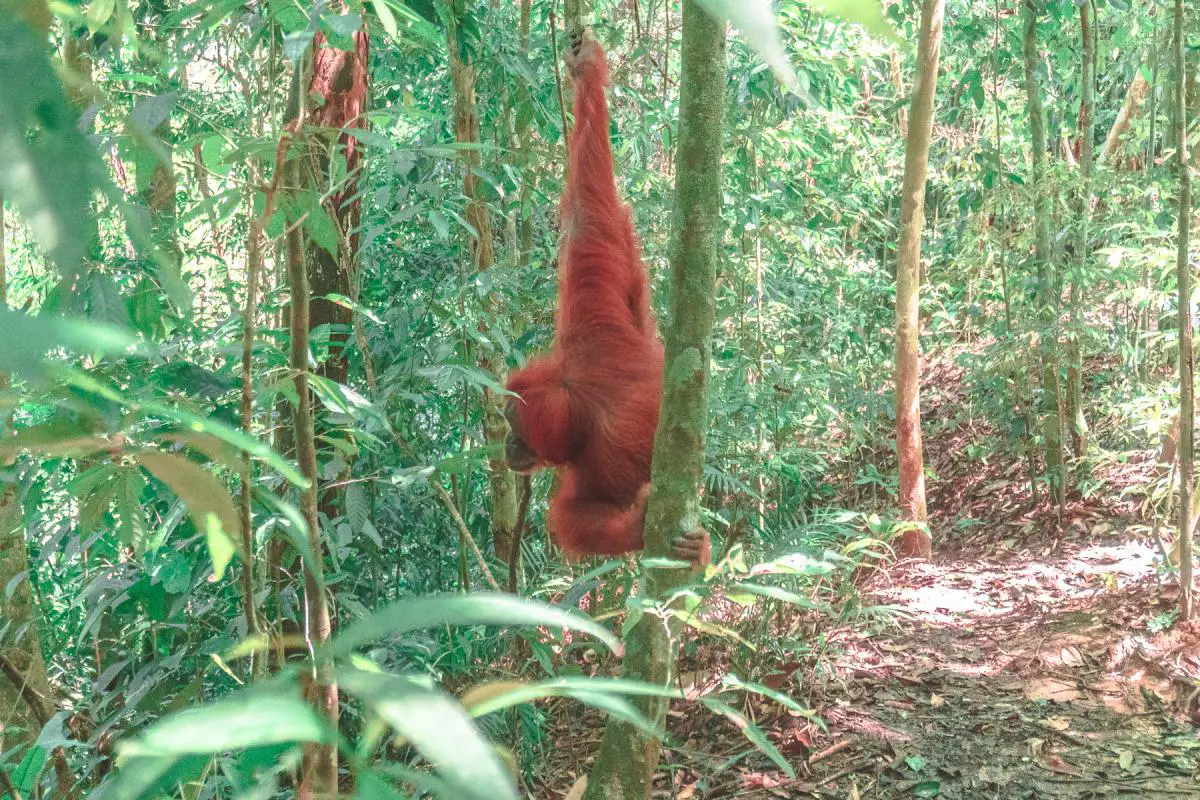
Upon waking up the following morning after your trek, your Bukit Lawang guide will offer you a choice between walking back to town or embarking on a river tubing adventure. Although we chose not to go rafting, I now regret the decision. River tubing offers a unique perspective of the jungle that you won’t experience on foot.
Food on the trek
The jungle day treks typically include lunch, while 2-day treks also offer dinner and breakfast. The meals we enjoyed during our treks were not only satisfying but delicious. Lunch consisted of fried rice, egg, crackers, and a selection of fruits like banana, pineapple, and watermelon.
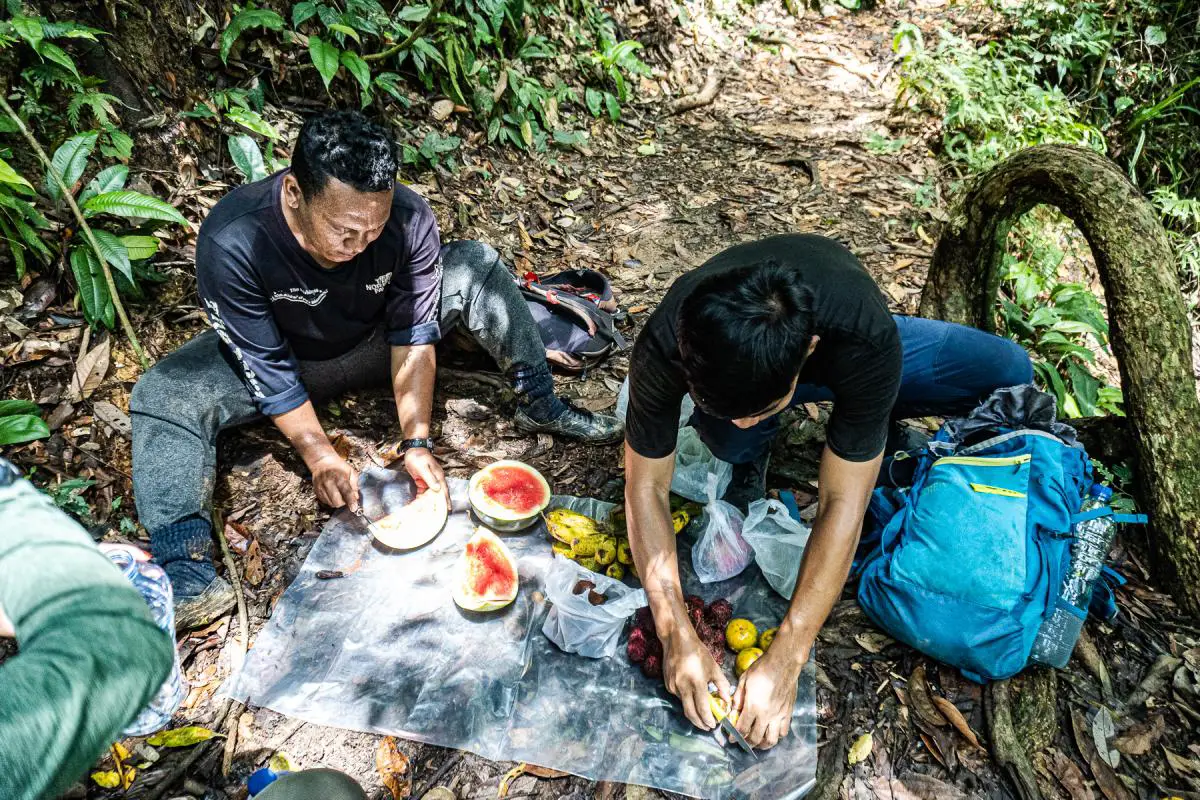
Dinner introduced us to a range of Indonesian dishes, including chicken curry and perkedel (potato cakes), as well as fried fish and rice, complemented by an assortment of veggies. Breakfast mirrored lunch but offered a choice between tea or coffee.

Trekking companies can accommodate specific dietary preferences or restrictions, provided you inform them a day in advance. Your culinary needs are well taken care of during the adventure.
Orangutans are critically endangered
The Sumatran Orangutan faces a dire situation, being classified as critically endangered with fewer than 15,000 individuals surviving in the wild. The primary culprit behind this crisis is the widespread destruction of their habitats, driven by the expansion of palm oil plantations.
Over the past 75 years, the Sumatran Orangutan population has witnessed a staggering 80% decline, and unfortunately, this downward trend is expected to persist unless substantial changes occur in both Indonesia and Malaysia.
While the Indonesian government has designated orangutans as a protected species, enforcement remains lax, even in cases of illegal killings. The prioritization of palm oil farming is rooted in its economic value, overshadowing conservation efforts.
Indonesia, still grappling with economic disparities, especially in regions like Sumatra where tourism hasn’t gained substantial traction, finds itself swayed by financial incentives. Regrettably, this motivation perpetuates activities like palm oil cultivation, illegal logging, and the illicit wildlife trade.
However, there is a glimmer of hope. As tourism gains momentum in destinations like the Bukit Lawang orangutan sanctuary, the influx of tourist revenue may encourage the implementation of proper safeguards for these remarkable creatures, securing their future for generations to come.
How much does it cost to trek with orangutans in Sumatra?
When it comes to experiencing the Sumatran Orangutan in Bukit Lawang, most tourists opt for either the 1-day trek at roughly 850k IDR per person or the 2-day trek at 1.5m IDR per person. Notably, the pricing for Bukit Lawang trekking adventures is quite consistent across various tour companies.
While there are options for treks that extend up to 7 days, which grant you deeper access into the jungle, it’s important to raise ethical concerns. These extended treks may encroach on the habitats of critically endangered species such as the Sumatran Tiger and Sumatran Rhino, which desperately require as much undisturbed space as possible.
It’s worth noting that the Sumatran rainforests have already significantly diminished due to palm oil plantations and illegal logging, and this alarming trend shows no signs of abating. Shockingly, there are fewer than 100 Sumatran Rhinos left in the wild.
In my personal opinion, the 1-day trek in Bukit Lawang offers the best value for your money. It requires the least physical exertion and has the least impact on the delicate ecosystem. During our 1-day trek, we were fortunate to encounter numerous orangutans and other wildlife.
If you’ve been gorilla trekking in Africa, then these prices are probably a bit of a hallelujah moment. I remember paying about $600 USD for my gorilla permit in Uganda for the mountain gorillas and about $400 for the gorilla permit to see the lowland gorillas of the DRC. Even though Indonesia is far wealthier as a nation than Uganda or the DRC, somehow the prices are just a tiny fraction of that of Africa.
When is the best time to visit Bukit Lawang
Gunung Leuser National Park boasts a tropical rainforest climate that deviates from the typical weather patterns seen in the rest of Indonesia. You can refer to a detailed monthly breakdown for specific weather insights.
As for the best time to visit, it’s essential to understand that every month in Bukit Lawang comes with its share of rain, as it’s nestled within a rainforest. While the driest months are typically February, March, June, and July, it’s worth noting that the rainfall remains considerably higher than in more arid regions like Bali.
During our own visit in December, the weather proved favorable for trekking. Showers typically occurred in the evenings or at night and seldom lasted more than a few hours at a stretch.
It’s worth mentioning that the majority of tourists choose to embark on their Bukit Lawang jungle treks between June and August, marking the high season. During this period, hundreds of trekkers set out daily. If you prefer a quieter and more intimate experience, you might want to consider visiting during a different month to avoid the crowds.




